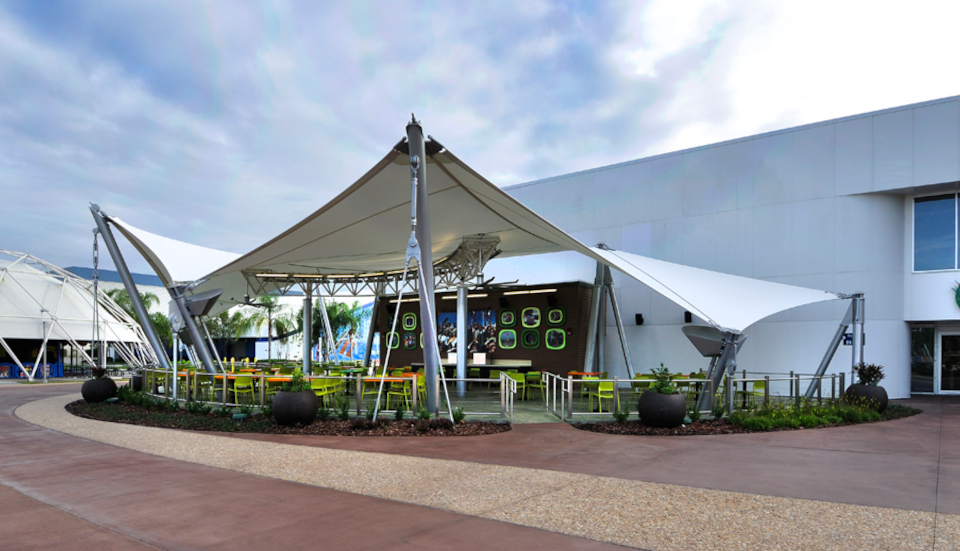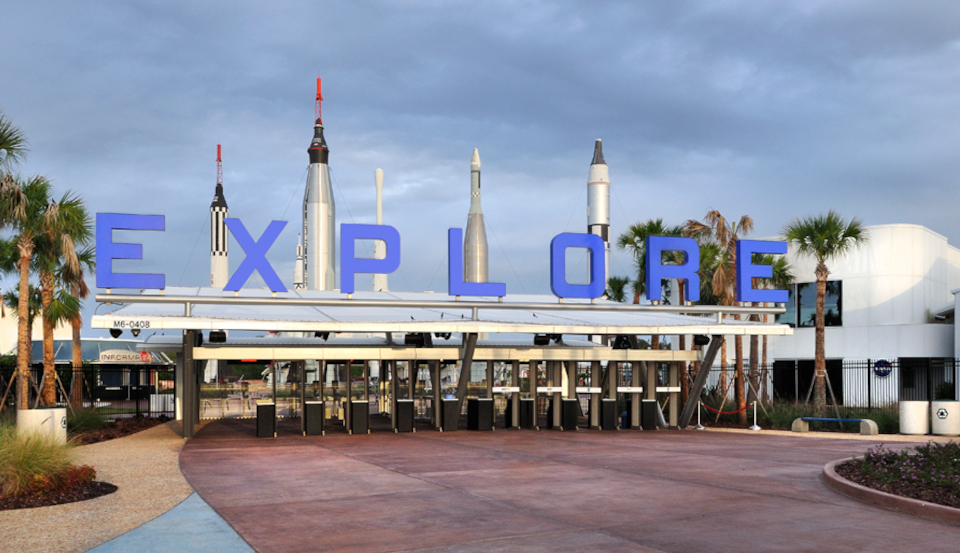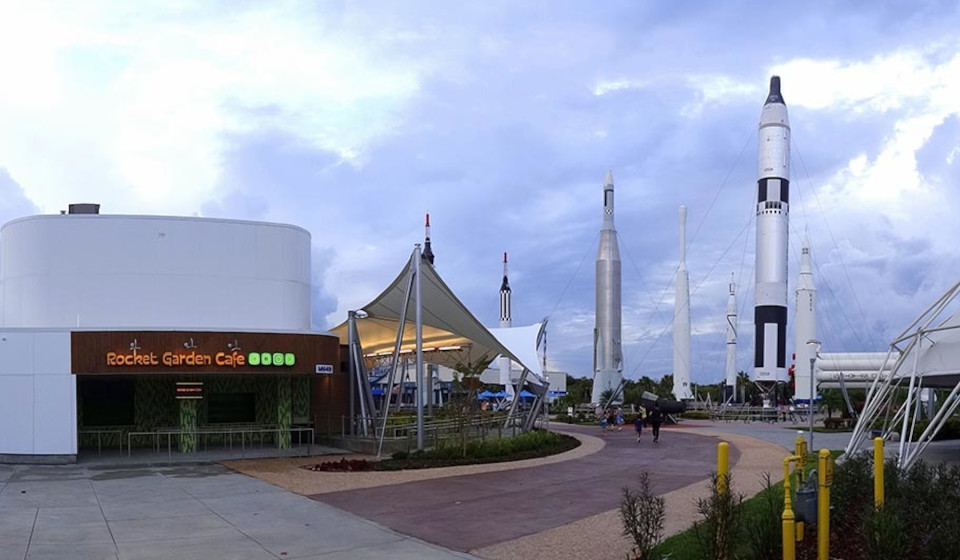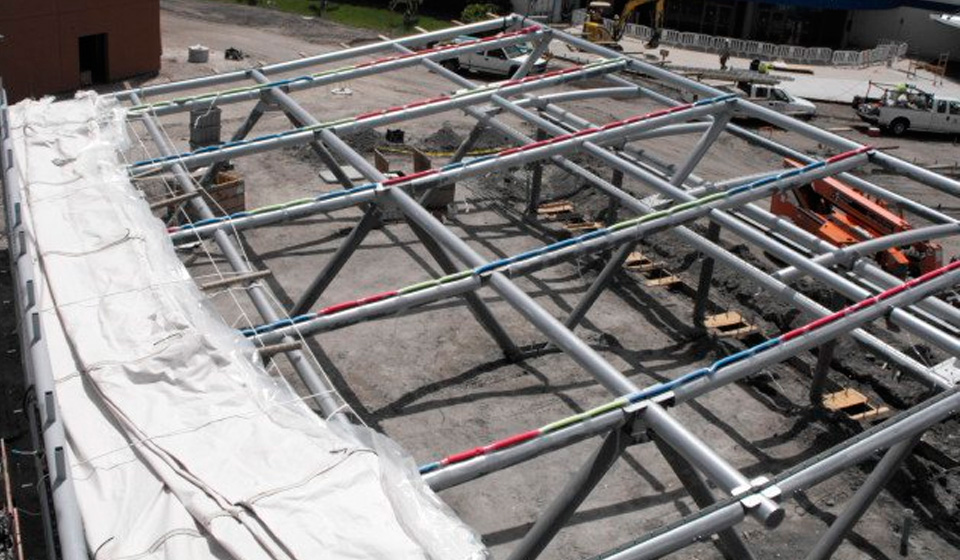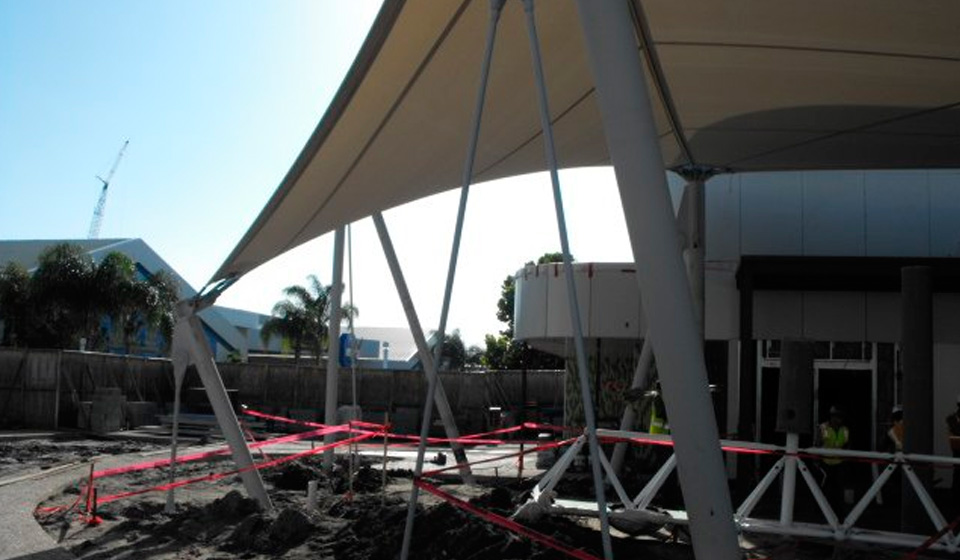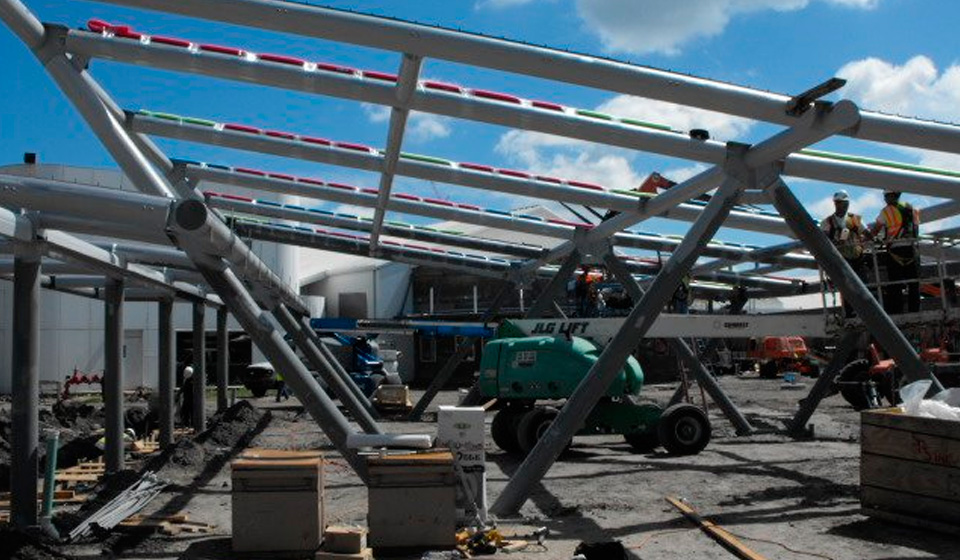
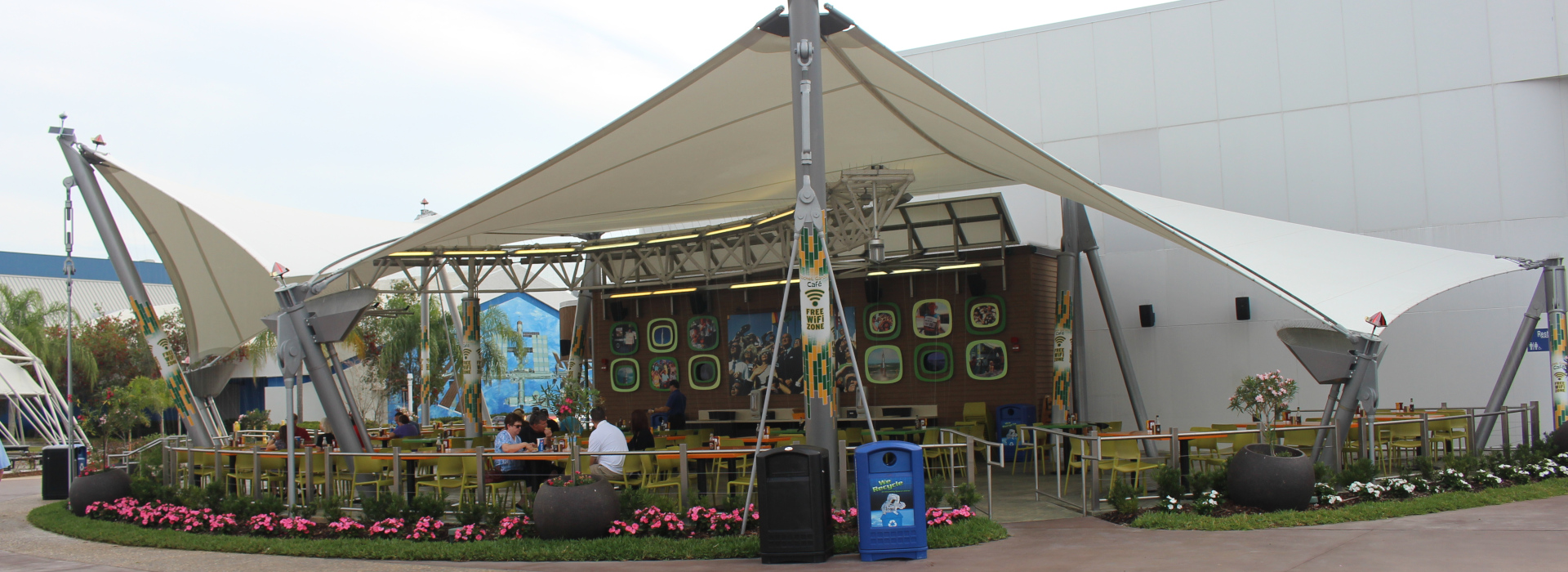
Kennedy Space Center
"Birdair utilizes NASA technology on a daily basis in tensile architecture structures and we are excited to be a part of this project as it has come full circle."
Fabric Type: PTFE Fiberglass
Market Sector: Entertainment / Leisure
Project Size: 7,320 sq.ft.
Architect: PGAV Architects Westwood, KS
Engineer: BRPH, Orlando, FL
Owner: Delaware North Companies, Buffalo, NY
General Contractor: Whiting Turner Contracting Company, Orlando, FL
Completion Date: July 12, 2012
The Kennedy Space Center Visitor Complex in Merritt Island, FL, one of Florida's most popular destinations with more than 1.5 million visitors annually. Birdair, Inc., the leading specialty contractor of tensile structures throughout the world, served as design-build roofing subcontractor for the addition of two custom PTFE tensile membrane canopies. As part of the facility's 65,000-square-foot exhibit expansion to house the retired space shuttle, Birdair designed, fabricated and installed the two tensile membrane structures comprised of 7,320 square-feet of PTFE, a Teflon®-coated woven fiberglass membrane that covers the visitor center's entrance and a dining patio. Opened in 2013, the new space center attraction also enables visitors to undergo a simulated shuttle launch, including a surrounding orbital view of the Earth as part of the new experience at the complex.
PTFE fiberglass membrane was first developed for NASA in the late 1960's as a material for the space suits worn by the Apollo astronauts. Birdair's founder, Walter Bird, saw the potential for PTFE fiberglass to be used in architecture and was the first to adapt it for use as a roofing material. In 1973, Birdair constructed the first permanent tensile membrane structure at the University of La Verne in Southern California. Since then, Birdair has used the material on over 1,300 tensile structures all over the world, many of which employ the PTFE fiberglass fabric developed for NASA. In 1989, Birdair was honored by the U.S. Space Foundation (in cooperation with NASA) by induction into the Space Technology Hall of Fame. The Space Technology Hall of Fame recognizes innovations and pioneers like Walter Bird and his company, which have transformed technologies developed for space applications into products that help improve our quality of life.
"Birdair utilizes NASA technology on a daily basis in tensile architecture structures and we are excited to be a part of this project as it has come full circle," says David Capezzuto, V.P. of Pre-Construction and Operations. "The material is lightweight, durable, strong and noncombustible – ideal for both Apollo-era spacesuits and tensile structures world-wide."
